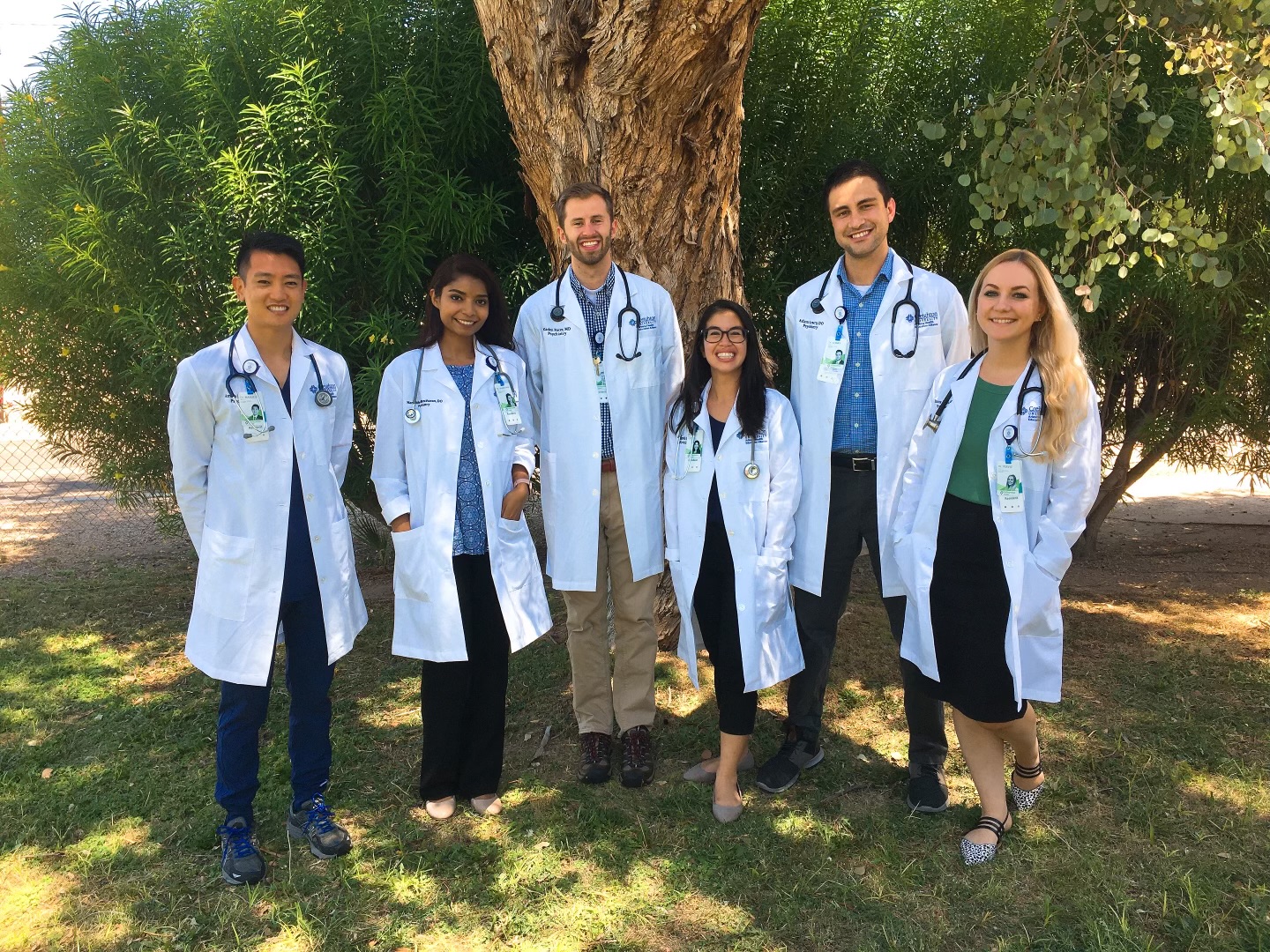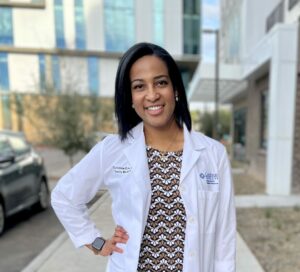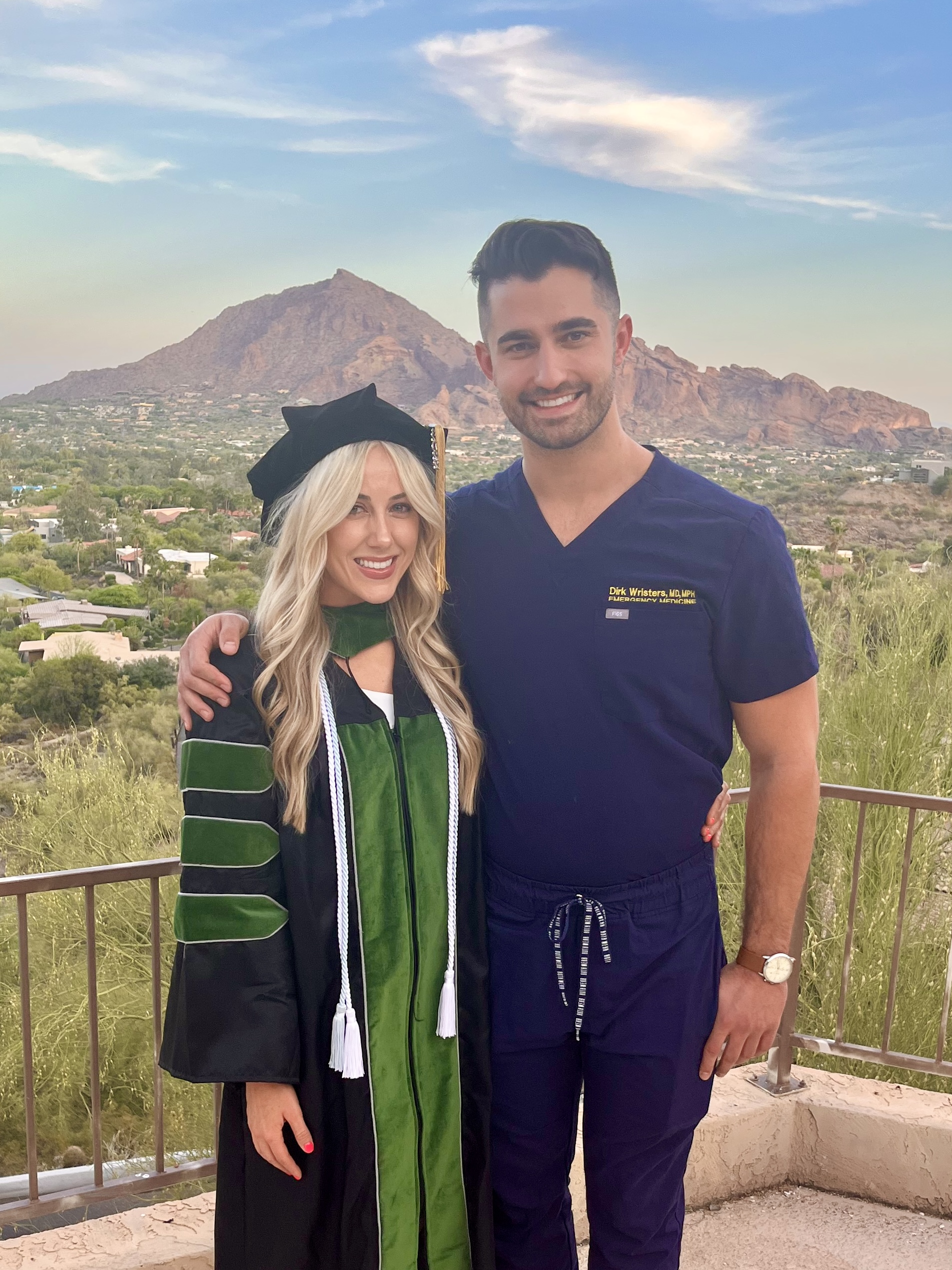
Meet the Next Generation of Healthcare
Teaching and Training Tomorrow’s Health Care Leaders is in Valleywise Health’s Soul
By 2033 America will face a shortage of roughly 124,000 physicians and will need to hire at least 200,000 nurses each year to meet increased demand and replace retiring nurses, according to the American Hospital Association. There is also a critical shortage of allied health and behavioral health professionals, especially in historically marginalized rural and urban communities.
As Arizona’s only public teaching hospital and Phoenix’s safety net health care system, Valleywise Health hears the demand for more highly trained health care professionals loud and clear. That’s why they are focused on training the next generation of physicians, nurses and other caregivers through the Creighton University-Arizona Health Education Alliance.

“Doctor-patient ratios are getting progressively worse and it’s one of our greatest weaknesses in the medical field at the moment,” said Dr. Christine Erie, a third-year family medicine resident at Valleywise Health. “In Arizona, there are approximately 60 primary care physicians for every 100,000 individuals which equates to 1,600 patients per doctor. That ratio is too high for any clinician to deliver quality care.
“Thankfully, there has been progress recently with the opening of new medical schools that allow more people to pursue medicine as a career and expansion of primary care physician residency programs. Both of these things will help lessen the impact of the impending medical provider crisis,” she added.
Each year more than 400 full-time resident physicians train with Valleywise Health. They come from more than 60 universities across the U.S. Valleywise also hosts approximately 875 medical students, more than 260 rotating medical residents, and nearly 2,000 nursing and allied health students annually.
Valleywise Health currently offers 13 high-demand physician residency programs ranging from emergency medicine to adult and child psychiatry. Last year, more than 1,400 medical school graduates applied for just 14 residency spots in the nationally recognized Valleywise Health Emergency Medicine program.
“Our emergency medicine program has been around since the 1980s and up until three years ago it was the only emergency medicine program in Phoenix, which is hard to believe since Phoenix is the fifth largest city in the nation,” said Dr. Dirk Wristers, third-year emergency medicine resident at Valleywise Health.
“The patients we interact with every day often have not seen a doctor in years – maybe since childhood. At Valleywise Health, residents, attending physicians and staff have a unique opportunity to link these patients into the health care system,” Dr. Wristers added. “If we don’t seize the opening, it may be another 10 years before they see a doctor, at which time their health could be severely compromised.
“One of the best parts about this job is that we get to reach out and touch these people’s lives and get them connected to a health care system that is not only going to take care of them now but educate them about preventative health care and ways they can prolong their life,” he concluded.
Research shows nearly 60% of physicians stay in the community where they did their residency training, which is why the Valleywise Health/Creighton partnership is so important to the long-term provider challenge in Arizona.

“One of the key takeaways from my residency at Valleywise Health is that people will remember how you treat them,” said Dr. Zachary Masuda, a fourth-year resident specializing in psychiatry. “They may not remember exactly what was discussed during a 20-minute appointment or remember the exact details of a medication you prescribed them, but they will remember the feeling of being heard.
“I think it’s so important for us as health care providers to meet the patients where they are – not only from a medical standpoint but emotionally, too. That connection is vital, no matter what medical specialty you are in,” Dr. Masuda said.
